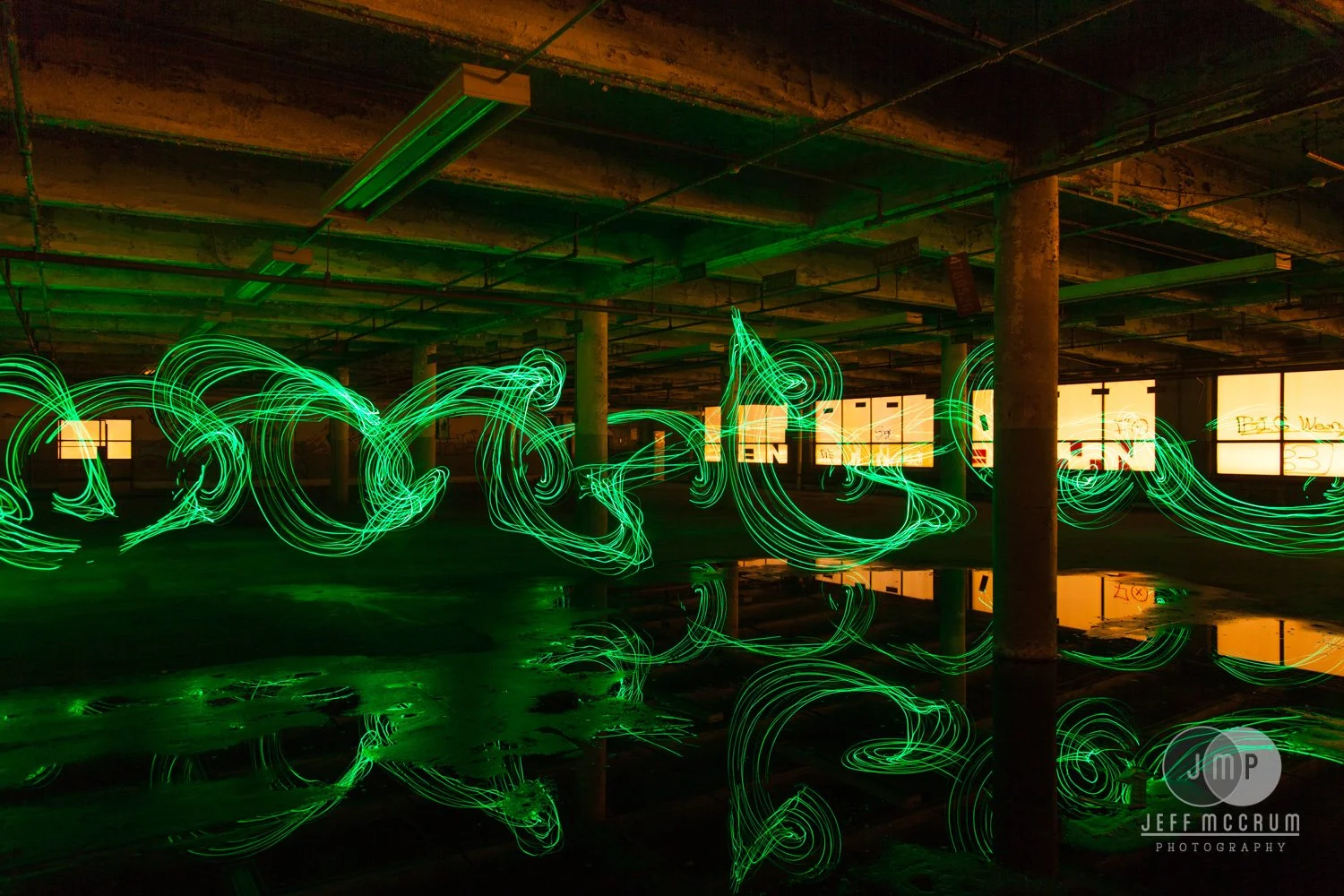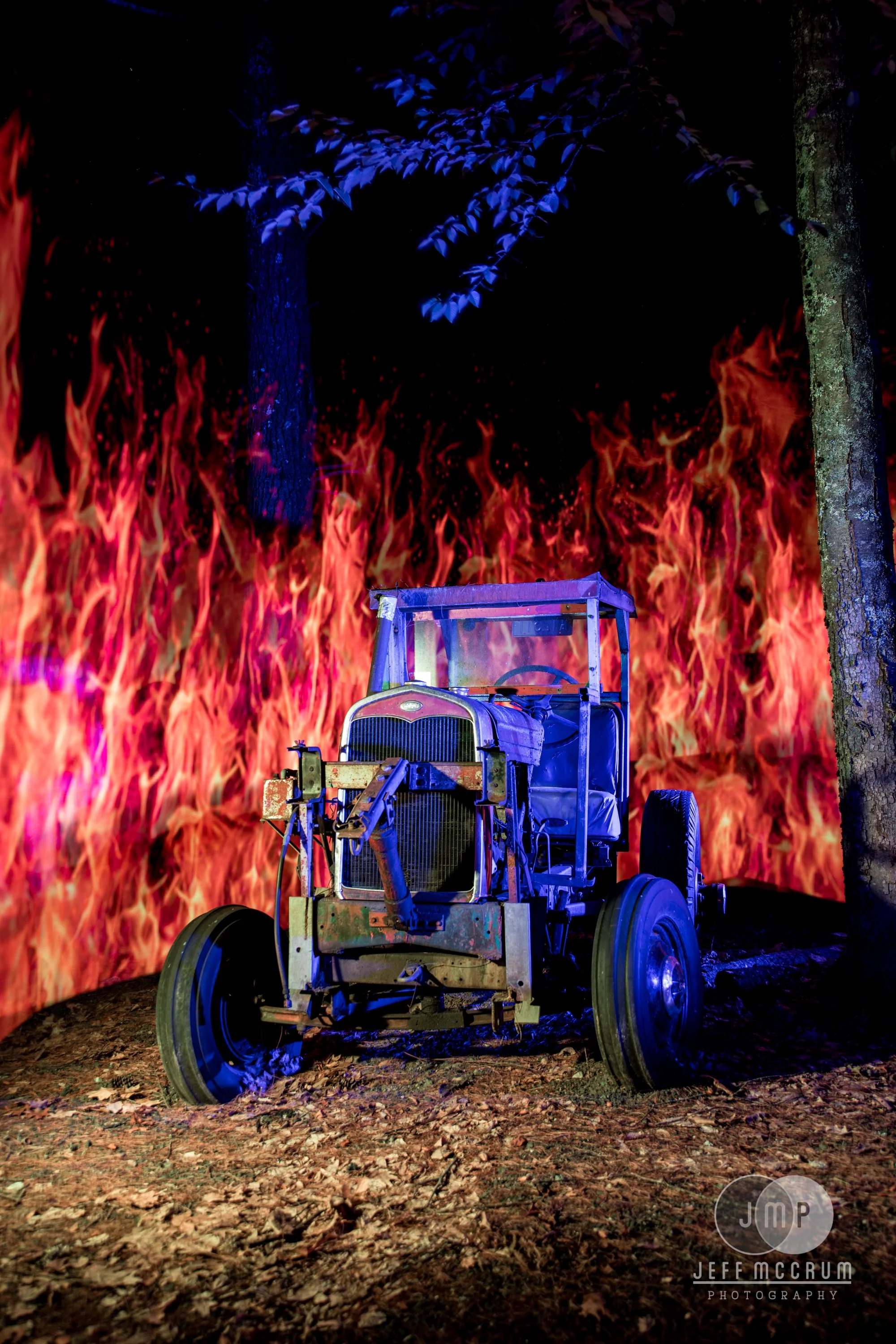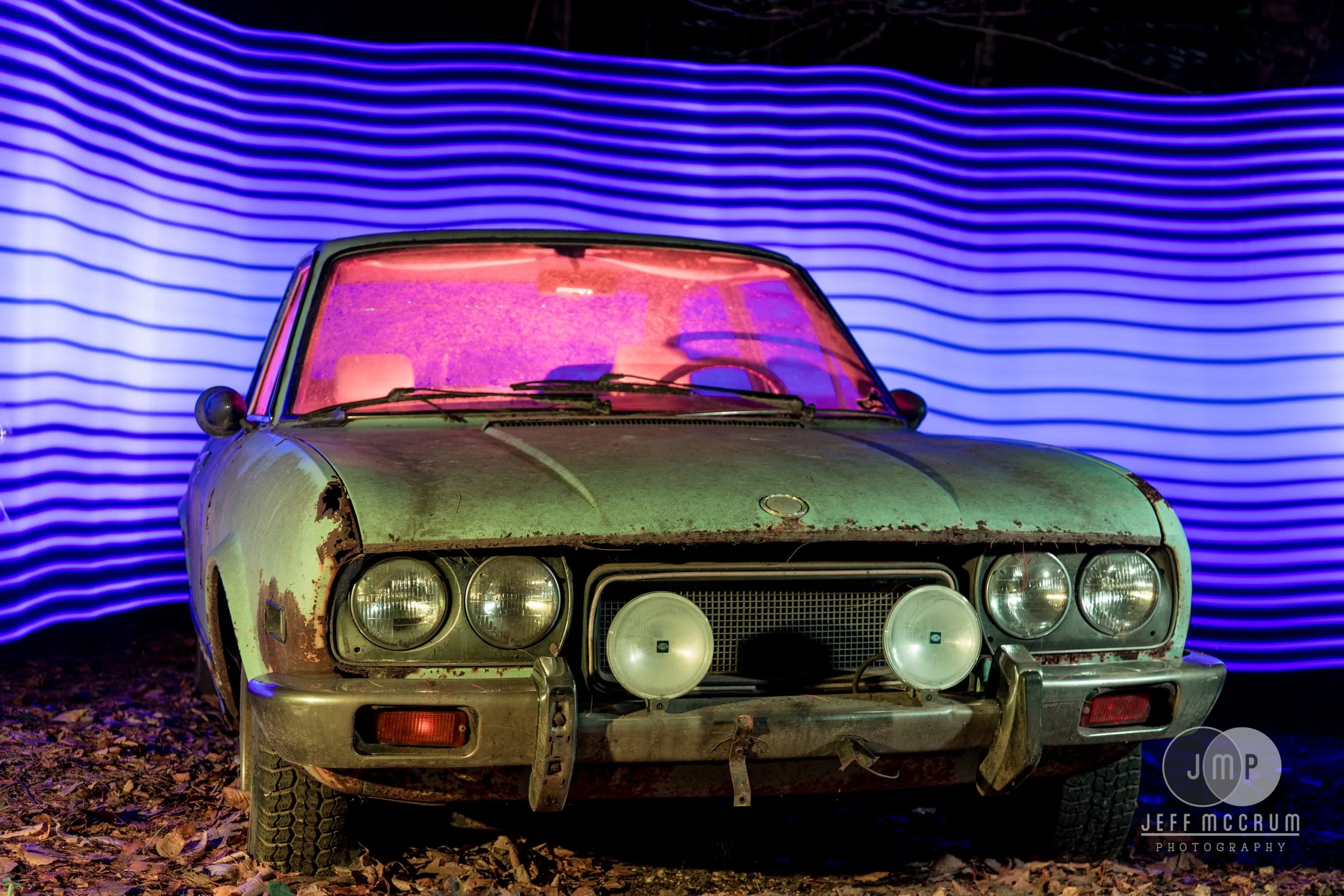What is light painting?
I often get asked what exactly is light painting and it has a simple answer that only begets additional questions. It is the addition of light to a subject in a photograph. Traditionally this has been accomplished via flashlight to "paint" a subject with light while the shutter is open. This is often mistaken for Photoshopping or, these days, AI, but this is all done in camera.
Like traditional painting, this is a staggeringly generalized definition that can cover acting from watercolor to oil to mixed media. Different subjects can call for different techniques, different artists will light the same subject very differently, and of course one artist can light the same subject differently depending on their interest and approach.
These are all light painted images, each a different subject or intent but all the same medium: capturing light in camera, but with greater creative opportunities for the photographer. And these opportunities can be exactly what you want them to be, subtle delicate balances to the natural landscape to prevent your subject from appearing like a black silhouette or a bole, colorful response to an immobile car in a forest.
Here, you can see what the difference is in Joshua Tree National Park with the tree lit and the same scene without any light painting. One of the keys to light painting is to avoid standing behind the camera, so this was lit entirely with one flashlight from camera right and then moved around to do the same thing from camera left for about half the time. The intent here was to capture the scene with natural color against the starry sky.
Also in Joshua Tree, the rocks in a small valley have been illuminated by hiker with a green headlamp and starlight illuminates the rest of the foreground and the Milky Way. This is a simple solution accomplished with equipment that can be easily carried in your bag, the unexpected pop from the green rocks plays well with the splash of yellow at the horizon and the dark blue skies.
Here’s s stark and minimalist approach at Mono Lake. Again, everything is lit via flashlight to the point of brightness where the stars are too dim to be noticed in the thumbnail. It makes the rocks appear to be glowing and with the still water reflection provides a very non-terrestrial appearance.
LED panels have helped facilitate a sea change in possibilities, with an ability to set up a few batery-powered lights for a scene and then remotely modify their intensity and color. It allows for photographers to quickly come up with a variety of looks for a subject with equipment that easily fits in any camera bag. But as you can see here, this allows for a great many options with very little work.
In addition to the light panels providing the color the tool used to create the fire effect and the lines in tehe background is a six-foot tall single-pixel wide LED device called the PixelStick. It uses a bitmap image and then displays one column of pixels at a time as you walk it through the scene. It’s not always perfect and, like all of this, takes trial and error before you can feel really confident in getting it in one shot.
If you’re interested in coming out to learn more about light painting Shehab Hossain and I are hosting a workshop in the middle of September, it’s a full day class and then four hours of shooting in the field at a private collection of approximately 40 acres of cars.













